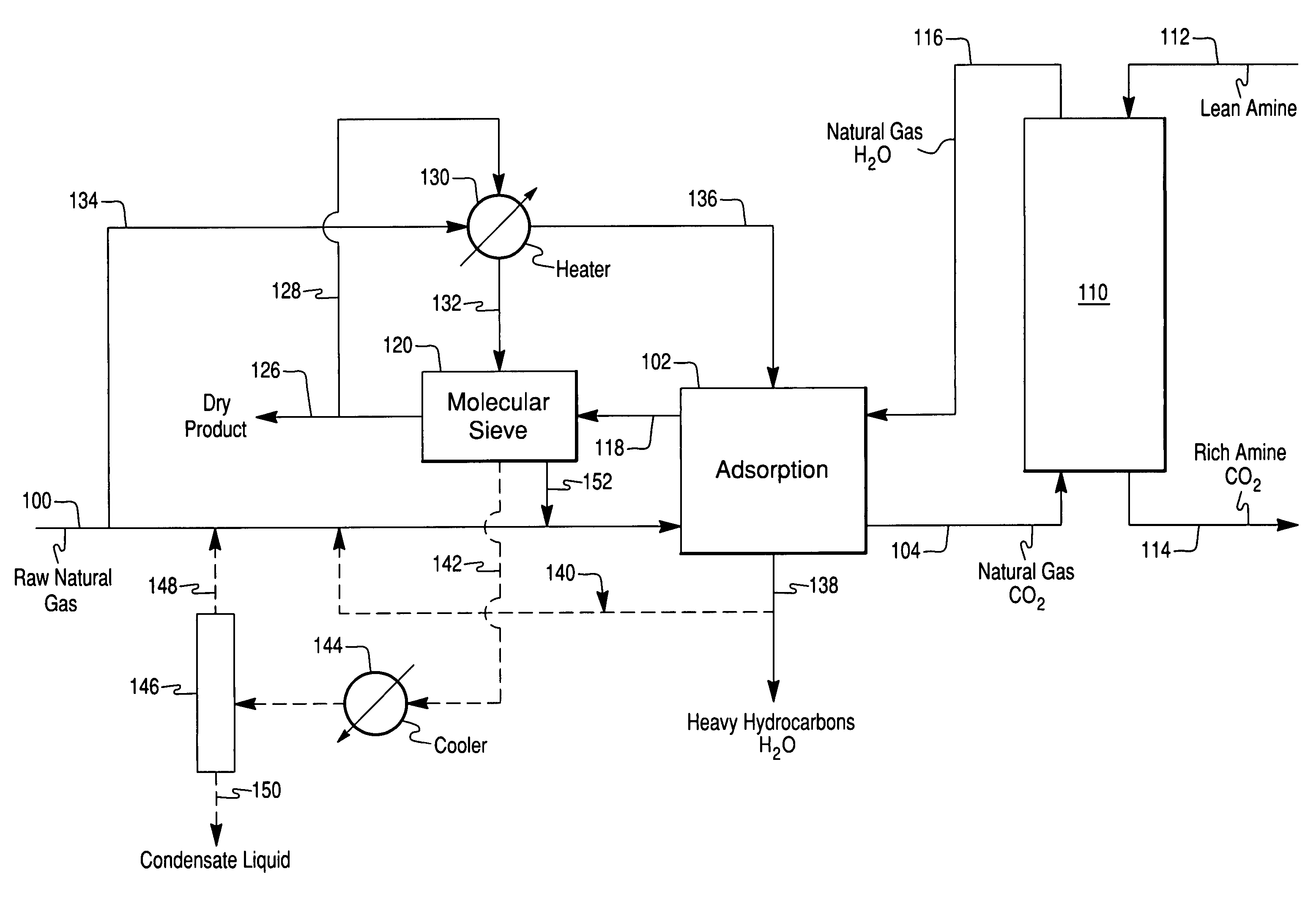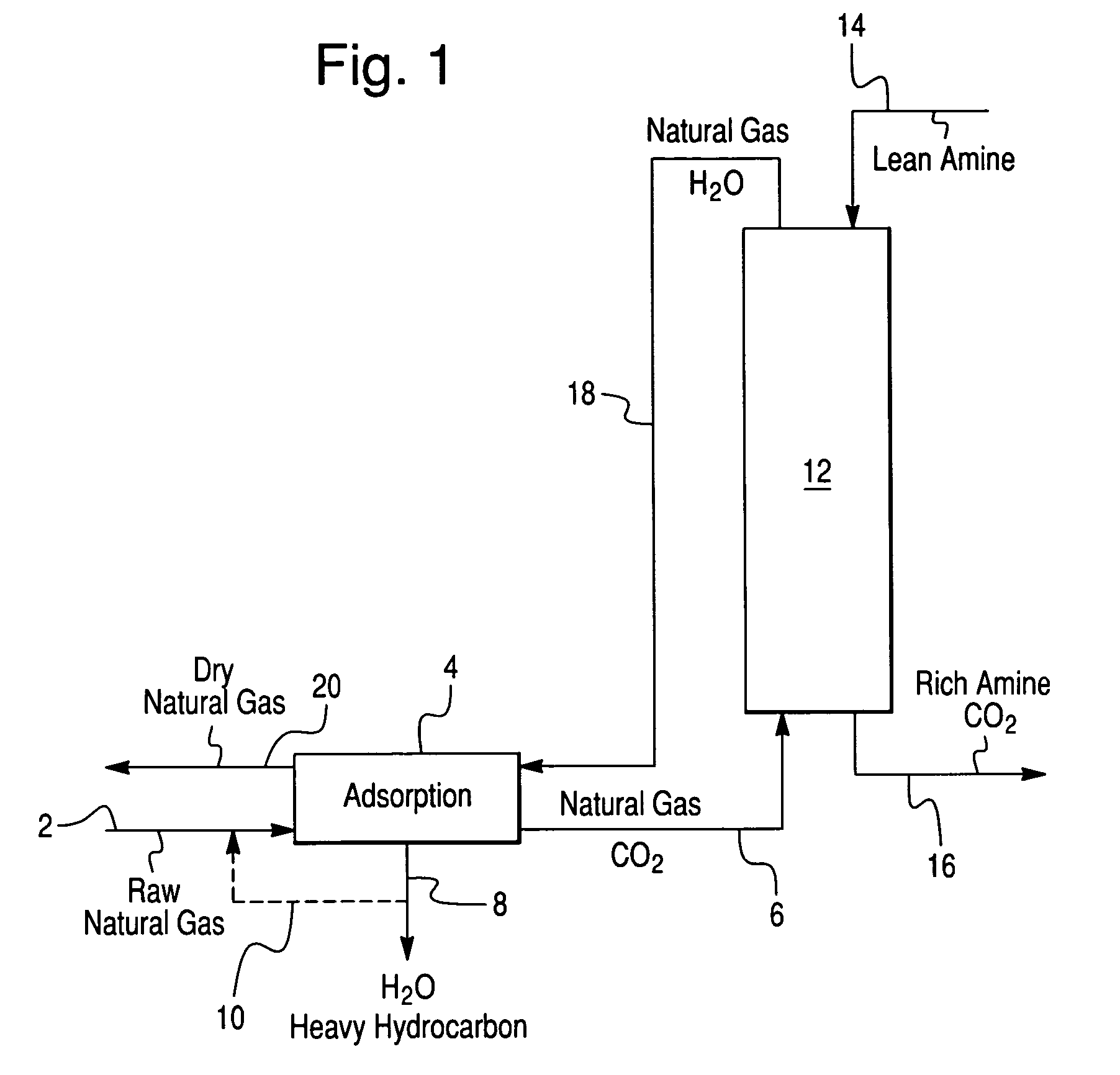Integrated heavy hydrocarbon removal, amine treating and dehydration
a technology of amine treatment and heavy hydrocarbon removal, applied in hydrogen sulfides, sustainable manufacturing/processing, separation processes, etc., can solve the problems of increasing transportation costs based on unit heating value, water will be reintroduced into natural gas stream by aqueous amine solvent, corrosion concerns
- Summary
- Abstract
- Description
- Claims
- Application Information
AI Technical Summary
Problems solved by technology
Method used
Image
Examples
Embodiment Construction
[0037]The raw natural gas feed stream processed in accordance with the present invention can be any methane containing gas, which can also include heavy hydrocarbons, water, carbon dioxide, hydrogen sulfide, and possibly other impurities such as mercaptans. The origin of the natural gas feed stream is not critical to this invention.
[0038]The present invention is directed to a novel process for the removal of carbon dioxides, hydrogen sulfides, and heavy hydrocarbons (e.g., C4+ hydrocarbons, or more preferably C6+ hydrocarbons) from a raw natural gas feed stream. More specifically, the present invention is directed to a multi-step process comprising a first step for the dehydration and removal of heavy hydrocarbons, a second step of aqueous amine treatment for the removal of acid gases, and a third step for the dehydration of the aqueous amine product effluent. Optionally, an additional water adsorbent step can be added as a fourth step, when desired for further dehydration of the na...
PUM
| Property | Measurement | Unit |
|---|---|---|
| temperature | aaaaa | aaaaa |
| temperatures | aaaaa | aaaaa |
| temperature | aaaaa | aaaaa |
Abstract
Description
Claims
Application Information
 Login to View More
Login to View More - R&D
- Intellectual Property
- Life Sciences
- Materials
- Tech Scout
- Unparalleled Data Quality
- Higher Quality Content
- 60% Fewer Hallucinations
Browse by: Latest US Patents, China's latest patents, Technical Efficacy Thesaurus, Application Domain, Technology Topic, Popular Technical Reports.
© 2025 PatSnap. All rights reserved.Legal|Privacy policy|Modern Slavery Act Transparency Statement|Sitemap|About US| Contact US: help@patsnap.com



